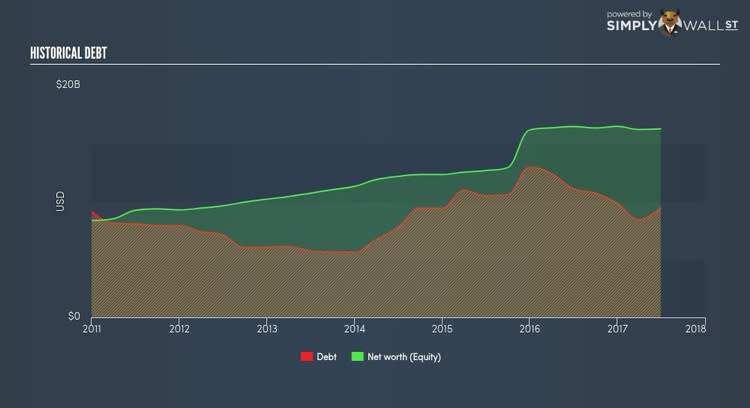Did M&T Bank Corporation (MTB) Create Value For Investors Over The Past Year?

M&T Bank Corporation (NYSE:MTB) delivered a less impressive 8.61% ROE over the past year, compared to the 8.95% return generated by its industry. An investor may attribute an inferior ROE to a relatively inefficient performance, and whilst this can often be the case, knowing the nuts and bolts of the ROE calculation may change that perspective and give you a deeper insight into MTB's past performance. I will take you through how metrics such as financial leverage impact ROE which may affect the overall sustainability of MTB's returns. See our latest analysis for MTB
Breaking down Return on Equity
Return on Equity (ROE) is a measure of MTB’s profit relative to its shareholders’ equity. An ROE of 8.61% implies $0.09 returned on every $1 invested. In most cases, a higher ROE is preferred; however, there are many other factors we must consider prior to making any investment decisions.
Return on Equity = Net Profit ÷ Shareholders Equity
ROE is assessed against cost of equity, which is measured using the Capital Asset Pricing Model (CAPM) – but let’s not dive into the details of that today. For now, let’s just look at the cost of equity number for MTB, which is 11.02%. This means MTB’s returns actually do not cover its own cost of equity, with a discrepancy of -2.41%. This isn’t sustainable as it implies, very simply, that the company pays more for its capital than what it generates in return. ROE can be dissected into three distinct ratios: net profit margin, asset turnover, and financial leverage. This is called the Dupont Formula:
Dupont Formula
ROE = profit margin × asset turnover × financial leverage
ROE = (annual net profit ÷ sales) × (sales ÷ assets) × (assets ÷ shareholders’ equity)
ROE = annual net profit ÷ shareholders’ equity
Essentially, profit margin shows how much money the company makes after paying for all its expenses. The other component, asset turnover, illustrates how much revenue MTB can make from its asset base. And finally, financial leverage is simply how much of assets are funded by equity, which exhibits how sustainable MTB’s capital structure is. Since ROE can be inflated by excessive debt, we need to examine MTB’s debt-to-equity level. Currently the debt-to-equity ratio stands at a reasonable 58.12%, which means its ROE is driven by its ability to grow its profit without a significant debt burden.
What this means for you:
Are you a shareholder? MTB’s ROE is underwhelming relative to the industry average, and its returns were also not strong enough to cover its own cost of equity. Since its existing ROE is not fuelled by unsustainable debt, investors shouldn’t give up as MTB still has capacity to improve shareholder returns by borrowing to invest in new projects in the future.
Are you a potential investor? If you are considering investing in MTB, basing your decision on ROE alone is certainly not sufficient. I recommend you do additional fundamental analysis by looking through our most recent infographic report on M&T Bank to help you make a more informed investment decision. If you are not interested in MTB anymore, you can use our free platform to see our list of stocks with Return on Equity over 20%.
To help readers see pass the short term volatility of the financial market, we aim to bring you a long-term focused research analysis purely driven by fundamental data. Note that our analysis does not factor in the latest price sensitive company announcements.
The author is an independent contributor and at the time of publication had no position in the stocks mentioned.


